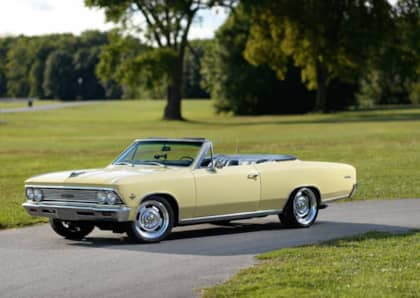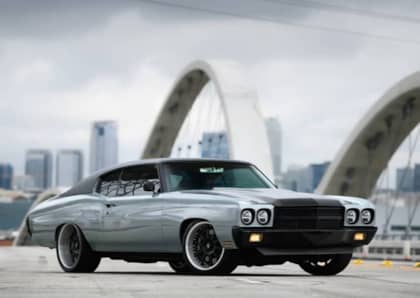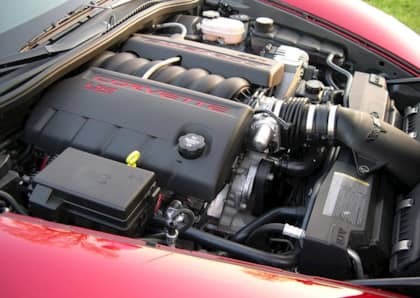The 2000-2006 Lincoln LS Is America's Forgotten V8 Sport Sedan
At the end of the 1990s Ford controlled a surprisingly wide slice of the world's luxury car market. By way of its 'Premier Automotive Group,' the Detroit-based automaker exercised authority over European luminaries like Aston Martin, Jaguar, Volvo, and Land Rover, alongside its in-house Lincoln and Mercury operations (as well as Japanese mainline manufacturer Mazda).

For a brief period of time, the Blue Oval took advantage of its global holdings to…try and cut costs as much as possible across the board. However prosaic, the decision to share platforms between badges as disparate as Volvo, Ford, Lincoln, and Jaguar, meant that for the first time several of the PAG members enjoyed high levels of build quality and reliability, modernizing their factories and training their workers in the latest assembly and design techniques.

It also made for some unusual experiments. The DEW98 platform in particular was used to underpin models as distinct as the retro-redux 2002-2005 Ford Thunderbird and the similarly heritage-inspired Jaguar S-Type. More intriguing, however, was the 2000-2006 Lincoln LS, the first sport sedan ever built by Ford's long-time luxury leader, and a DEW98-based car that broke new ground for the company in the pursuit of the German rivals that had long dominated the fun-to-drive four-door segment.
Sophisticated Speed
DEW98's versatility—it did, after all, produce both sedan and convertible models on the same basic chassis—flowed from Ford's ability to spread its investment in the platform over several different brands. For Lincoln, it offered the chance to take on four-door BMW, Audi, and Mercedes-Benz offerings with a level of technical sophistication that had been missing from its showrooms for decades. Unsurprisingly, Ford turned to a German, Helmuth Schrader, as the car's primary design chief, with company CEO Jacques Nasser fully supporting the initiative.

The Lincoln LS provided a fully-independent double-wishbone suspension front and rear, making it the first model to do so since the recently-departed Mark VIII luxury coupe. Aluminum was used wherever possible underneath the car to help keep its curb weight manageable, and aluminum body panels were also found on the hood, front fenders, and trunk lid. As would be the case with the Euro-baiting Cadillac CTS that followed a few years later, the LS was longer and wider than the class-leading BMW 3 Series, relying on the American perception that 'more was more' when shopping for a premium vehicle. It wasn't all that much bigger, however, slotting in neatly between the 3 Series and the 5 Series, and lining up well against more staid competitors from Infiniti and Lexus.

In the engine bay, the entry-level option was a 3.0L V6 that produced 201 hp and 205 lb-ft of torque. Not only were these numbers competitive with similarly-sized six-cylinder options offered by other luxury sedans, they were paired with a distinctly un-Lincoln-like five-speed manual transmission (with a five-speed automatic also available).

Stepping up the V8 realm netted buyers a 3.9L unit good for 252 hp and 267 lb-ft of torque (automatic only). Each of these motors had been derived from slightly larger Jaguar motors from the AJ family, providing the LS with yet another cross-brand advantage.
Middle Of The Road, But The Right Road
When it arrived for the 2000 model year, the Jaguar LS featured styling that was more intriguing than the bland Cadillac Catera, but a restrained compared to what was found on the Audi A4 or the BMW 3 Series. Handsome, and fitting in well alongside Lincoln's popular Navigator SUV, the LS interior was somewhat more derivative.

The passenger compartment again borrowed heavily from Jaguar (this time its S-Type platform-mate), balancing the desire to provide a sport-focused experience with the need to cater to plush American tastes. Overall, the LS cabin delivered a not-displeasing mix of light and dark plastics and faux wood paneling, with a whiff of Ford parts bin thrown in for good measure. Thanks to its long wheelbase, passenger room was decent even in the rear quarters.

From a driving perspective, the LS was supremely balanced, with nearly 50/50 weight distribution between the sedan's two poles (with the V8 edging a little more mass onto the front axle). Although the chassis was stiffer than anything that had ever before worn a Lincoln badge, straight line speed was sacrificed somewhat by the car's modest gearing, with the V8 version taking just over 7 seconds to reach 60 mph (with another half second added by the V6).

Handling, too, tended to over-emphasize isolation versus road feel, splitting the difference between true sport sedan focus and boulevardier, making it more of a highway mile-eater than a back road terror. Still, it was impressive—and surprising—enough to win Motor Trend's Car of the Year award.
Almost A Mustang?
The Lincoln LS was an excellent first effort, and despite its dynamic shortcomings compared to its BMW bogey, it was priced significantly lower than any of its cross-Atlantic competitors. The DEW98 platform seemed to guarantee that the next-generation version of the LS would build on its strengths and buttress its weaknesses, further dialing in the sport sedan concept that Lincoln was chasing.

Alas, it was not to be. After Nasser left Ford in the early 2000s, the LS lost its strongest supporters, and the LS languished. In 2003 it was refreshed, with the V6 climbing to 232 hp and the V8 bumping up to the 280 hp and 286 lb-ft mark, but the manual gearbox was no longer in the picture. Although a half-second faster off the line, the decision to abandon a third pedal was met with disdain from both buyers and automotive media at the time, as was the lack of an appreciable improvement in the car's handling (and the installation of more anonymous looks). A teased, special edition of the LS built by McLaren Performance Technologies (featuring a 350 hp, supercharged version of its V8 and a six-speed manual) never made it close to production, and to top it all off, the price continued to creep upwards across the board as Lincoln sought to squeeze more profit out of fewer examples sold.

After a total of 262,000 sales, the Lincoln LS was removed from the line-up in 2006, thus ending a rear-wheel drive sport sedan experiment that would never be repeated by the brand. As Lincoln prepared to move to an all-wheel drive/front-wheel drive future (sharing platforms with Ford rather than the now-discontinued PAG), DEW98 was originally planned to live on in the form of the 2005 Ford Mustang redesign. Ultimately, Ford simply couldn't reconcile the cost differential between the sophisticated DEW98 chassis and the inexpensive, live rear axle S197 design that ended up slotting underneath the new pony car, especially considering that the majority of sales would be low-buck six-cylinder models.

The decision to keep DEW out of the Mustang mix also likely doomed any question of a Lincoln variant of Ford's popular muscle car. After all, once couldn't expect a modern Lincoln customer to suffer the perceived rough-and-tumble character of a solid rear axle. By the time the Mustang transitioned to an independent rear suspension of its own a decade later, the LS had completely disappeared into the rearview mirror—and with it, any plans for furthering Lincoln's high performance plans.











